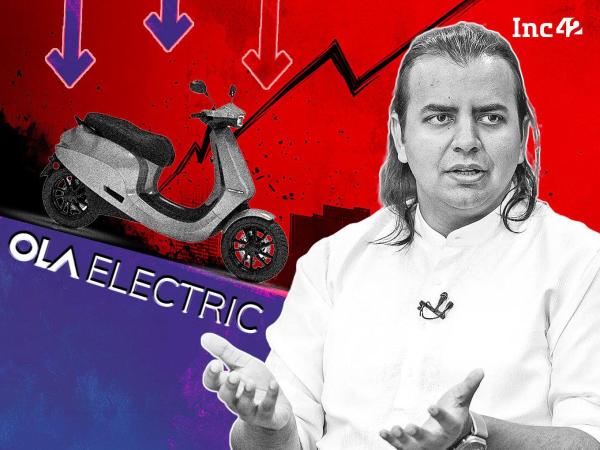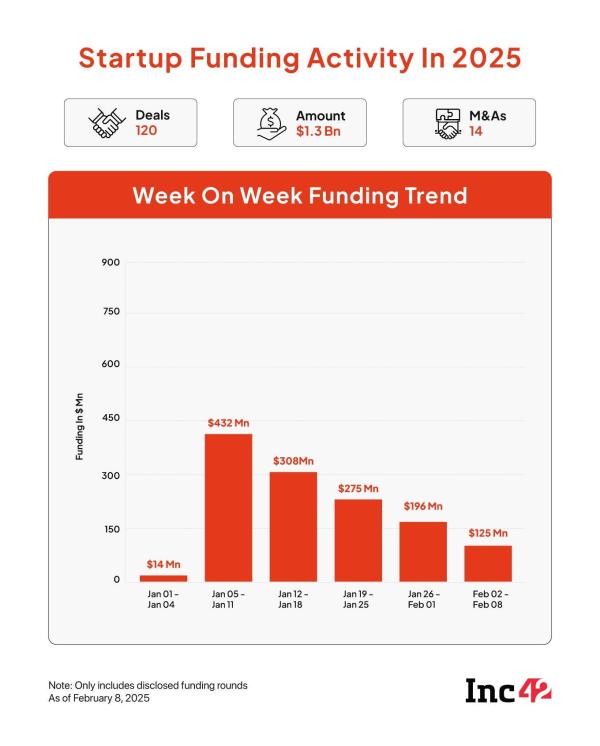

Ola Electric has had a rough few months, going from a post-IPO high to crashing below its listing price and with more pain in store after a weak Q3 performance.
For most of its life — after becoming an OEM in 2020 — the company has played from a position of strength whether it is due to its high capital accumulation or heavy market share. The EV maker now finds itself in an unusual position, having to claw back from a position of weakness.
Having raced its first electric scooter out of the factory in less than two years, Ola Electric stepped on the accelerator on the distribution front by using the ride-hailing app to acquire customers. Plus, the company’s competitive pricing also allowed it to grab a huge market share quickly, even as complaints rose against its scooters.
Some of that corner-cutting is catching up to Ola Electric now, as the Bhavish Aggarwal-led company enters a tough phase. Let’s see how, but after a look at the top stories of the week:
The EV maker’s numbers for the December quarter make for bleak reading with losses growing 50% from Q2 to INR 564 Cr. Operating revenue fell by 19% to INR 1,069 Cr as the company lost market share to new-age rivals and legacy OEMs.
On the profitability side, the widening EBITDA losses should be even more worrying, skidding to -40.7% from -19.5%. Ola’s aggressive pricing, investments for the service network expansion and persistently high fixed costs mean that the company is unable to move the needle on profitability.
We have made this argument in the past. Ola Electric losses were lowest and revenue was highest , when the company delivered a record number of scooters. Since that peak, it has been a downhill track for Ola in terms of deliveries.
Ashwin Patil, senior research analyst at LKP Securities, told Inc42 after the Q2 results that Ola Electric needs to focus on growing sales volume by about 30%-40% from the current levels to at least reach the breakeven mark. But the company did not meet this target in Q3 and now is further behind the ideal trajectory.
At the time, Patil said that it would take at least two to three years for Ola Electric to get out of the red.
Brokerages also estimated that the company will remain loss-making on a consolidated level till FY27, or March 2027. And the latest performance is unlikely to truncate this timeline.
In January, Ola Electric reclaimed its top position in India’s electric two-wheeler (E2W) market, surpassing legacy players TVS Motor and Bajaj Auto in terms of electric scooter sales. Ola Electric slipped behind Bajaj Auto and TVS Motor in December 2024 sales. With this, Ola Electric’s market share in the electric two-wheeler market increased to 25% in January from 19% in the previous month.
Will New Models Solve The Puzzle?Nearly five months after unveiling its first EV bike, Roadster X series, the company officially launched the production-ready Roadster X this past week, with a starting price of INR 74,999, and going up to INR 1,69,999.
This marks the company’s entry into the electric motorcycle market after introducing the new-gen S1 range of electric scooters in the previous week. Ola Electric started Roadster X production last month at Ola’s Futurefactory in Krishnagiri, Tamil Nadu and the deliveries are expected to begin in mid-March 2025.
The new motorbikes would be a key focus for CEO Bhavish Aggarwal, who is pinning the future of the company on these premium products. But that may not exactly pan out.
Total units sold by Ola Electric dipped by over 3% YoY to 84,029 in Q3, however, the number of premium scooters sold by Ola Electric dropped to 34.8% of total sales in Q3 FY25, compared to 96% in Q3 FY24.
This shows that Ola Electric has not been able to carry forward the premium segment momentum that held it in good stead one year ago. Will the new launches reinvigorate sales as Bhavish Aggarwal expects? In fact, the CEO clearly laid out the marker for his business team after the Q3 results.
Bhavish Aggarwal’s 50K TargetIn the earnings call, Aggarwal told analysts that Ola Electric is looking at a monthly sales figure of 50,000 units in order to break even in terms of EBITDA. Currently, the company is around 25,000-30,000 monthly sales, so getting to that stage would require a 2X surge in sales.
The CEO elaborated: “We are diversifying our portfolio by simultaneously selling two generations of our EV scooters to grow margin and volume. We are also expecting the battery cell manufacturing division to start reaping us benefits in terms of expanding our operating margin, and finally, the motorbike category will expand in terms of sales through this calendar year.”
Some analysts are of the opinion that Ola Electric’s plans to penetrate into the electric three-wheeler segment could be beneficial for the company given it is a more profitable segment compared to two-wheelers.
While acknowledging the competitive EV two-wheeler market, Aggarwal added that investment in service centre and dealership experiences, warranty schemes resulted in creating stronger customer goodwill but higher losses.
Shares of the Bhavish Aggarwal-led company saw a 3% decline on Friday to INR 69.69 after the poor Q3 FY25 numbers — below their IPO price of INR 76, and less than half of the all-time high of INR 157 in August last year.
Sunday Roundup: Startup Funding, New Launches & More
The post appeared first on .